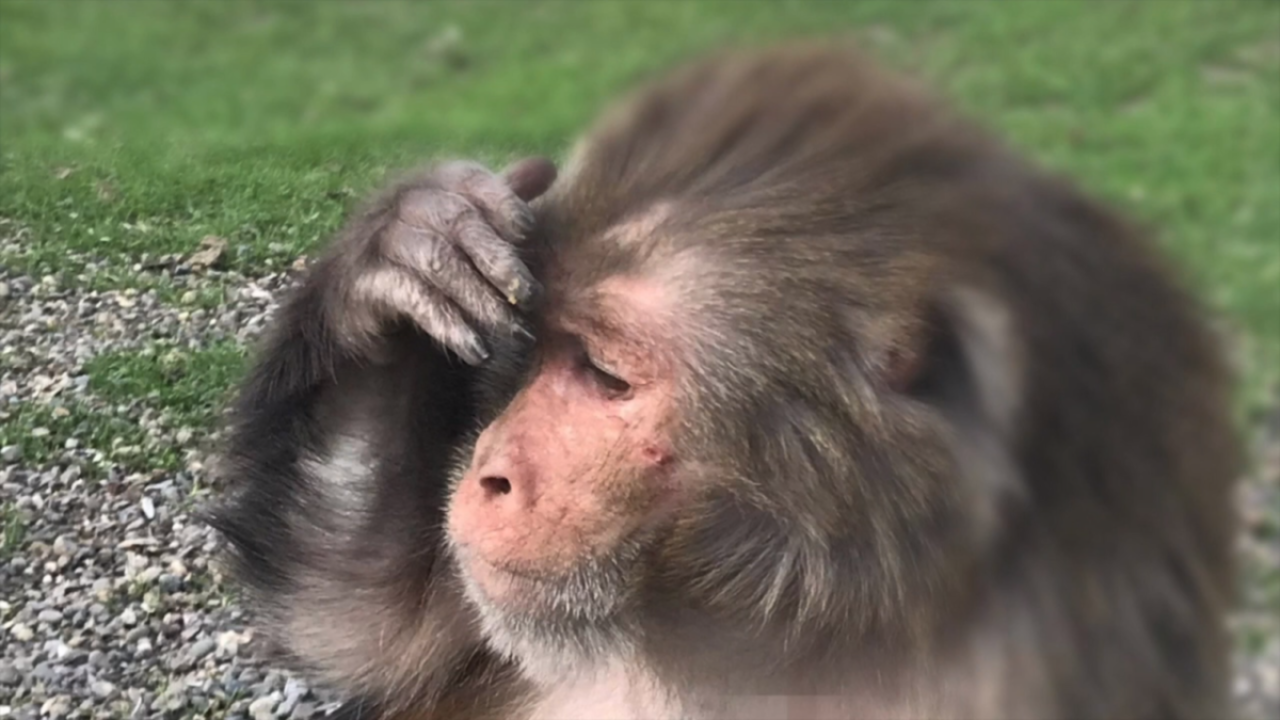
NATURALLY OCCURRING CONE DISORDER IN NONHUMAN PRIMATES
The discovery of a naturally-occurring mutation that caused impaired vision in four rhesus macaques at the California National Primate Research Center at the University of California, Davis, holds promise for restoring vision in the animals, and eventually, in humans.
The finding is important because the mutated gene, PDE6C, is known to cause severe cone photoreceptor dysfunction that results in complete color blindness (achromatopsia) in humans, but the condition had not been identified before in nonhuman primates.
“This is the first animal model we have for inherited retinal disease, a significant cause of untreatable blindness worldwide,” said Ala Moshiri, a physician scientist and associate professor at the UC Davis Eye Center. He is first author of the study, “A nonhuman primate model of inherited retinal disease,” which published Jan. 22 in the Journal of Clinical Investigation.
Nonhuman primates, like people, have a macula, a specialized cone-rich area of the retina used for high visual acuity and central vision. Few models of cone disorders exist because most of the animals involved in eye research don’t have a macula. By finding an animal model with genetic macular disease that affects both macaques and humans, researchers will be able to study it to optimize both gene replacement therapies and cell transplantation techniques to correct disorders specifically affecting the macula.
“The mutation in PDE6C disables this critical enzyme that cone photoreceptors in the retina need to convert light to an electrical signal, which the brain interprets as images,” Moshiri said. “People with achromatopsia perceive the world in different shades of black, white and gray, and are legally blind. They are very sensitive to light and have difficulty seeing in normal daylight.”
Affected macaques appear to have similar signs, according to Sara Thomasy, a UC Davis veterinary ophthalmologist and co-corresponding author on the paper.
“This research began when our behavioral services staff and veterinarians who monitor and care for our macaque colonies noticed a few animals using their hands to shade their eyes from sunlight,” Thomasy said. “Thinking there might be an eye problem, they asked us to examine them in our Vision Sciences Laboratory, which has the same advanced equipment used for noninvasive eye exams in humans.” The animal’s eyes were then carefully examined and genetic tests performed on DNA from blood samples.
No animals were harmed as part of this research.
Established in 2015, the laboratory is a collaboration between the primate center and the schools of medicine and veterinary medicine at UC Davis. It enables researchers to study vision disorders in greater depth than ever before. It includes noninvasive instruments such as electroretinography to assess retinal function, as well as multimodal imaging cameras and devices to assess and photograph eye structures as well as measure eye pressure.
“When we evaluated the affected macaques, the electroretinogram allowed us to see that they had no cone function at all,” Thomasy said. “We then identified about 40 candidate genes known to affect cone function and consulted with the team at the Baylor College of Medicine who identified the causative mutation in PDE6C. Our colleagues at the University of Iowa, who specialize in the study of this particular gene, identified how the mutation altered the enzyme’s catalytic function, preventing the conversion of light into electrical signals.”
UC Davis and primate center researchers now estimate that approximately 10 percent of macaques who have been studied at the California National Primate Research Center are carriers of the gene for this spontaneously-occurring, inherited form of complete color blindness.
There is a real need for developing treatments for inherited retinal disorders. In humans, retinitis pigmentosa and cone dystrophy affect approximately 1 in 3,500 and approximately 1 in 10,000 individuals, respectively. An estimated 2 million people worldwide suffer from blinding genetic retinal diseases, which can be caused by mutations in at least 250 different genes. So far there is only one FDA-approved gene therapy, which is for a different gene responsible for a fraction of Leber’s congenital amaurosis and retinitis pigmentosa cases.
A $6.7-million grant from the National Eye Institute Audacious Goals Initiative for Regenerative Medicine to the UC Davis-Baylor team will further this research effort and catalyze new treatments for blinding conditions like cone dystrophy, retinitis pigmentosa, age-related macular degeneration and other degenerative retinal diseases.
Other authors of the study include Soohyun Kim, Glenn Yiu, Christopher J. Murphy at UC Davis; Sarah Davis, Ori Pomerantz, Laura Garzel and Ashley Cameron at the California National Primate Research Center; Jeffrey A. Rogers, Rui Chen, R. Alan Harris, Yumei Li, J. Timothy Stout, Raveendran Muthuswamy, Qingnan Liang, and Jun Wang at Baylor College of Medicine; Yijun Huang at the University of Wisconsin School of Medicine and Public Health; and Kota N. Gopalakrishna, Kimberly Boyd, Nikolai O. Artemyev at the University of Iowa Carver College of Medicine.
